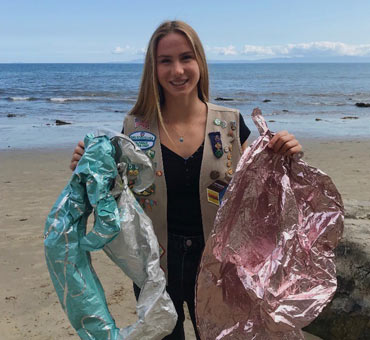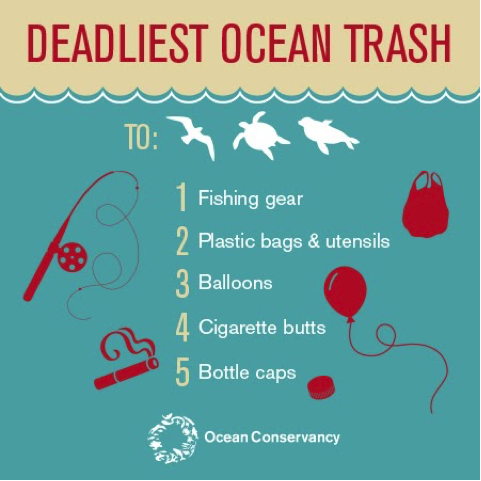Some people see a problem and wonder how others will solve it—but not Joy Downing Riley. When she noticed that litter was impacting marine life along one of her favorite coastal areas—the Rincon Parkway—she leaped into action, not only by picking up trash herself but by addressing the issue at its upstream source.
Joy believes in the power of individual action to create positive change and over the years she’s served the community in a variety of volunteer roles. Until last spring, she volunteered as a literacy coach. But when the pandemic made it too risky to meet in person, she looked for other ways to give back and joined Santa Barbara Channelkeeper’s Watershed Brigade to help remove trash from public places. In the past nine months, she’s become a star volunteer—and a true Watershed Hero.
The Rincon Parkway, the stretch of beach along the Pacific Coast Highway between Emma Wood State Beach and Mussel Shoals, is a special place to Joy. It’s a vantage point from which she enjoys watching wildlife while taking in the island views and the ever-changing light. She appreciates that the Parkway is accessible to all and loves seeing the happiness on people’s faces–from fishermen and surfers to families.
When stay-at-home orders went in to place in March of 2020 and people looked to outdoor areas for recreation, Joy noticed an increase in the use of this area and observed more trash along the road making its way to the beach. She felt it was important to be out there cleaning the area, educating the community, and doing something positive.
Her experience locating and assessing stranded California sea lions and seals as a volunteer for Channel Island Marine and Wildlife Institute has provided her with firsthand insight into the trash eco-system while also fostering a sense of personal responsibility for the marine life. She has observed the impact that our trash and human street waste have on sensitive areas along the coast as the flow of stormwater runoff carries litter to the ocean and notes the direct connection between the health of wildlife and humans.
“Sea lions are important to study. They are sentinel mammals, and their health can be indicative of a number of environmental concerns,” she explains. “The trash we tend drop on the ground or let blow from trash cans, ends up in our roadsides, culverts, barrancas, and eventually in the ocean. Our degrading debris is toxic to wildlife.”
During her time clearing trash and debris from the Parkway, she’s seen beer bottles strewn by visitors, she’s watched dump trucks unload heaps of dirt, people change their oil, discard Styrofoam to-go food containers, diapers, dog waste, tangled fishing line, and cigarette butts (she once collected 150 in a ¼ mile radius), but she believes that when people know better, they do better.
Beyond cleaning litter from the coastal roadway and beach areas, Joy has taken measures to address litter at the source by educating the public and connecting with companies and public agencies to ask for their help. She talks with people and shares her passion for keeping trash out of waterways and habitats clean.
“My sense is that if people had a better understanding of ecosystems—and the flow of trash to the sea—that they would be more cautious about litter.”
While doing clean-ups in the neighborhood near Telegraph Road and Ventura College, she regularly noticed 10-12 Starbucks cups in the storm drains on her mile and a half route. In Ventura and Santa Barbara open storm drains flow straight to the ocean. So, she made an appointment to talk with the Starbucks manager and together they outlined a strategy to keep cups out of the stormwater system. Their initiatives included new signs reminding customers to dispose of their trash responsibly. She was also able to voice her concerns to the regional Starbucks manager and open a dialogue with local city officials about more expansive litter-prevention actions they could take.
Joy’s enthusiasm is infectious and her presence along this special stretch of roadway has not only shown people that she cares deeply about the Rincon Parkway, it has inspired others to join in.
“It’s as if my presence there—seeing me in my gloves and mask picking up trash has given people permission to go out there and do something positive too. That feels good.”
Joy is living proof of the power of citizen action. By doing regular clean-ups, meeting with store managers and City agencies, and launching an educational campaign to increase public awareness of the path trash takes through storm drains and creeks to the ocean, she has contributed to a community-wide movement and has empowered others to take steps toward creating change.
We are profoundly grateful.

